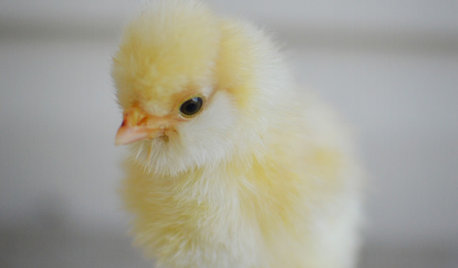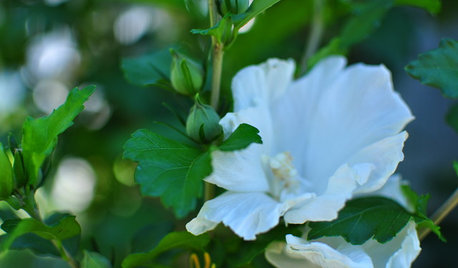Tomato Psyllids - do you have them (and not know it)?
spaghetina
13 years ago
Related Stories

EDIBLE GARDENSSummer Crops: How to Grow Tomatoes
Plant tomato seedlings in spring for one of the best tastes of summer, fresh from your backyard
Full Story
COLOR10 Reasons to Make a Splash With Tomato Red
You won’t duck at these tomatoes. See how bold red shades can play up architecture, light up a dark spot and add drama
Full Story
LIFEKitchen Traditions: Tomato Season Meets a Family Legacy
Somewhere a Sicilian great-great-grandmother is smiling at a bowl of American-made sauce
Full Story
PETSWhat You Need to Know Before Buying Chicks
Ordering chicks for your backyard coop? Easy. But caring for them requires planning and foresight. Here's what to do
Full Story
FARM YOUR YARD6 Things to Know Before You Start Growing Your Own Food
It takes time and practice, but growing edibles in the suburbs or city is possible with smart prep and patience
Full Story
KITCHEN SINKSEverything You Need to Know About Farmhouse Sinks
They’re charming, homey, durable, elegant, functional and nostalgic. Those are just a few of the reasons they’re so popular
Full Story
HOUSEKEEPINGOut, Darn Spot! Tips for Removing Carpet Stains
Know the right solutions and when to use them to prevent stains from pets, soda, chocolate, blood and more
Full Story
FARM YOUR YARDHouzz Call: Home Farmers, Show Us Your Edible Gardens
We want to see where your tomatoes, summer squashes and beautiful berries are growing this summer
Full Story
GARDENING GUIDESCalifornia Gardener's June Checklist
Update your hydrangeas, catch up on tomatoes and more ways to enjoy your California garden in June
Full Story
GARDENING GUIDESMid-Atlantic Gardener's August Checklist
Bring in the bounty of tomatoes, savor the show of grasses and start seeding some cool-season plants
Full Story







jean001
spaghetinaOriginal Author
Related Professionals
Wrentham Landscape Architects & Landscape Designers · Fort Lee Landscape Architects & Landscape Designers · Rancho Cordova Landscape Architects & Landscape Designers · Bethlehem Landscape Contractors · Cicero Landscape Contractors · Deerfield Landscape Contractors · Fort Payne Landscape Contractors · Madera Landscape Contractors · Manhattan Landscape Contractors · Pueblo West Landscape Contractors · Chicago Ridge Landscape Contractors · Lauderdale Lakes Landscape Contractors · Baileys Crossroads Landscape Contractors · Clermont Driveway Installation & Maintenance · Fremont Driveway Installation & Maintenancernewste
spaghetinaOriginal Author
jean001
rnewste
rnewste
spaghetinaOriginal Author
rnewste
spaghetinaOriginal Author
sequin2000
spaghetinaOriginal Author
dancinglemons
spaghetinaOriginal Author
sequin2000
spaghetinaOriginal Author
rnewste
spaghetinaOriginal Author
driftwoodtx
spaghetinaOriginal Author
spaghetinaOriginal Author
spaghetinaOriginal Author
driftwoodtx
spaghetinaOriginal Author
driftwoodtx
rnewste
spaghetinaOriginal Author
driftwoodtx
rnewste
sequin2000
spaghetinaOriginal Author
sequin2000
dgbeig
spaghetinaOriginal Author
suprneko
keiko59
drositano
User
gorbelly